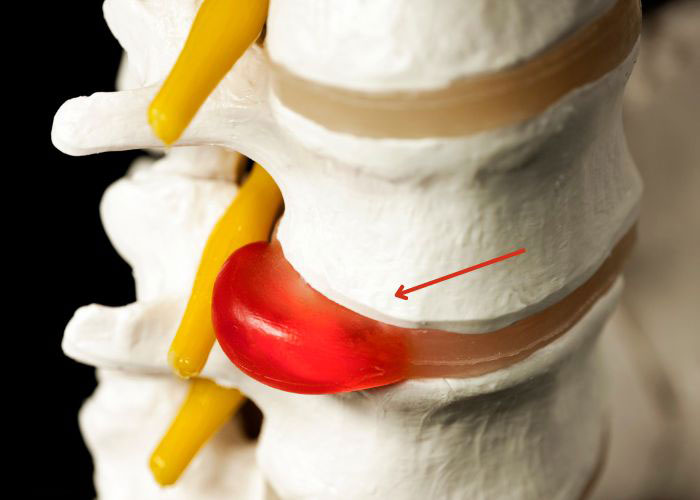Thoracic Disc Herniation Specialist
A thoracic disc herniation can occur when the spinal disc bulges or ruptures into the spinal cord causing nerve irritation. Most patients benefit from conservative therapies, however, some individuals may require surgical intervention Doctor Andre M. Samuel, orthopedic spine specialist, offers both surgical and non-surgical treatment options for patients in Clear Lake, Houston, and Sugar Land, Texas area, who are experiencing severe pain in the middle of their back. Contact Dr. Samuel’s team today!

What is thoracic disc herniation?
Between the neck and lower back are 12 vertebrae that make up the thoracic spine. Separating the bony vertebrae are tough, rubbery discs that reduce friction by acting as shock absorbers. The disc structure weakens over time which can result in a bulge of the jelly-like nucleus against the spinal cord. A thoracic disc herniation is a relatively rare orthopedic spinal condition making up only about one percent of all disc herniations. Dr. Andre M. Samuel, orthopedic spine specialist serving the Clear Lake, Houston, Sugar Land, Texas area has the knowledge and understanding, as well as substantial experience, in treating patients who have experienced a thoracic disc herniation.

What causes a thoracic disc herniation?
The ribs, while not directly attached to the spine, rest in the indentations of the thoracic vertebrae. This configuration adds stability to the thoracic spine which in turn makes this section of the spine less susceptible to “wear and tear” and other orthopedic injuries. A thoracic disc herniation is typically caused by a sudden and traumatic injury such as a motor vehicle collision. The direct impact on the spinal column can cause the disc to bulge or rupture resulting in pressure against the spinal cord from the contents of the disc.
What are the symptoms of a thoracic disc herniation?
The most common symptom of a thoracic disc herniation is pain localized to the mid-back that may wrap around the chest. Some other common symptoms of a thoracic disc herniation include:
- Difficulty walking
- Numbness of the lower extremities
- Loss of lower extremity muscle strength
- Decreased sensation
- Bowel dysfunction, in rare cases
How is a thoracic disc herniation diagnosed?
Dr. Samuel is able to diagnose a thoracic disc herniation after gathering a thorough medical history and performing a physical examination. The torso and lower extremities are evaluated for any signs of decreased sensation, muscle weakness, or abnormalities in the nerve reflexes. While diagnostic imaging studies, such as magnetic resonance imaging (MRI), are helpful in delineating the affected thoracic disc, nerve conduction studies can also provide evidence of nerve irritation at the level of the affected thoracic disc.
What is the treatment for a thoracic disc herniation?
Non-surgical treatment:
The majority of individuals with a thoracic disc herniation are usually able to resolve their symptoms with a combination of conservative therapies. A short period of bed rest followed by activity modifications can help alleviate any symptoms. Dr. Samuel recommends non-steroidal anti-inflammatory medications (NSAIDs) to reduce pain and swelling of the mid-back. Certain stabilization exercises can also strengthen the core muscles to prevent re-injury.
Surgical treatment:
However, surgical intervention may be necessary for patients with more severe thoracic disc herniations who failed conservative treatment. A thoracic disc herniation is surgically corrected by removing all or part of the damaged intervertebral disc in a procedure known as a discectomy. There are a variety of techniques to perform this procedure, so Dr. Samuel will determine the best surgical approach based on a number of factors such as location of the affected nerve root and severity of disc herniation.



